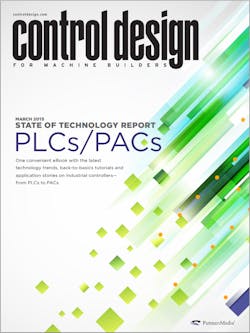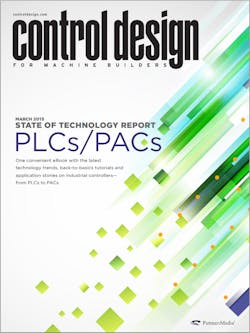Download the eBook here.
The programmable logic controller (PLC) is essentially an industrial mini-computer, capable of being programmed with one of the IEC 61131-3 languages. Its primary benefit when first introduced was the elimination of problems associated with altering a manufacturing process; the massive web of relays, wiring and terminal blocks created an array of potential issues each time a machine needed a changeover.
Ladder logic was and still is the programming language of choice, but many things have changed over the years. There’s no longer the need for proprietary terminals, and I/O options have exploded.
PLCs are designed to exist in industrial environments, and they can handle a high number of I/O arrangements, which connect to a variety of sensing devices, as well as actuators that operate motors or fluid-powered cylinders.
Near the dawn of the millennium, ARC Advisory Group coined a new term — the “programmable automation controller” (PAC) — although much discussion has taken place over the years as to what specifically differentiates a PAC from a PLC.
This State of Technology Report explores in greater detail the trends that have shaped PLC/PAC machine control, the fundamentals of the technology, and real-life examples of implementation that have proven successful.
Drawn from the most recent articles published in Control Design, this special report includes articles on emerging developments, basic primers and machine-control examples illustrating the latest technology in action.
About the Author
Control Design
Control Design

Leaders relevant to this article:

